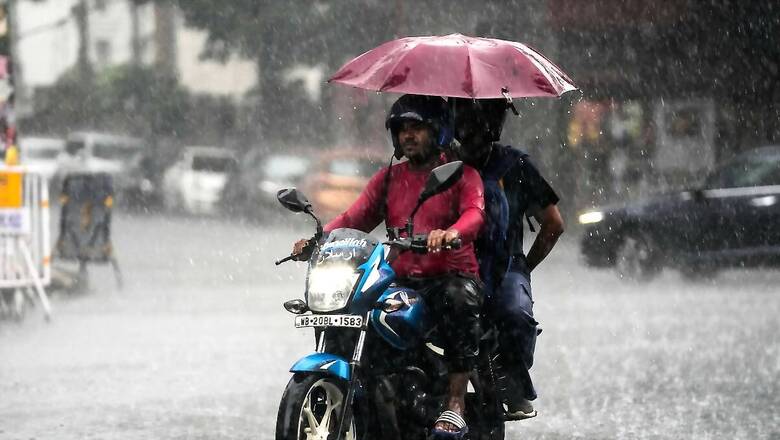
views
Global forecasters have predicted a delay in the onset of La Niña – a naturally recurring ocean phenomenon that is known to influence weather across countries, including the southwest monsoon over India.
It forms when there is large-scale cooling of the surface waters of the equatorial Pacific Ocean, which in turn boosts the rainfall activity over India during the monsoon season. According to the US-based National Oceanic and Atmospheric Administration (NOAA), the temperatures over the equatorial Pacific Ocean are mostly near-average at present, which means it is still in the ‘ENSO-neutral’ phase. There is a 70% chance that it may develop during the August to October period, and then continue through the winter.
HOW IS MONSOON LINKED TO LA NIÑA?
A significant ocean phenomenon, La Niña augurs well for the southwest monsoon and is associated with good rains during the June to September period. The India Meteorological Department (IMD) had also issued a forecast of above-normal monsoon rains this season, more than 106% of the long-period average (LPA), highlighting the positive impact of La Niña.
According to its latest Monsoon Mission Climate Forecast System (MMCFS), the La Niña conditions are likely to develop during second half of the monsoon season. “The El Niño conditions (warm waters over Pacific) have vanished and neutral conditions prevail. We are expecting the La Niña conditions to prevail during the second-half of the monsoon season during August-September, which will favour the monsoon,” the IMD DG Dr M Mohapatra had said.
According to Indian scientists, even if La Niña emerges later-than-usual, it should not be a worry for India, as it is not the only climate phenomenon influencing the monsoon rains.
“It is evident that the temperatures over the equatorial Pacific Ocean are close to normal, and have not begun to cool down. But the conditions will start changing over the next two weeks. Even though, the onset of La Niña may be declared a little later, we’ll begin to see its effect during the second-half of monsoon. So, there is no reason to worry. Also, we do not need La Niña for a good monsoon, it is just one of the many factors that influences it,” noted meteorologist Dr M Rajeevan told News18.
These climate events are also occurring at a time, when global temperatures are at an all-time high. 2024 is on track to become the hottest year on record globally, and the sea-surface temperatures remain exceptionally high. The forecasting team at NOAA is favouring a delayed formation of La Niña this month, but anticipating the transition from neutral to occur by August-October.
STATUS OF MONSOON: 3% DEFICIT
As of July 12, India is witnessing a 3% deficit in the monsoon rains compared to the long-period average (LPA), with the maximum shortfall of nearly minus-8% over Central India, followed by minus-3% over East and North-East, and minus-1% over Northwest India. The rains are excess over the southern peninsula by 6%.
As many as 11 out of the total 36 sub-divisions are currently experiencing a rainfall-deficit. This includes Gangetic West Bengal, Jharkhand, Chhattisgarh, Odisha, Kerala-Mahe, Haryana-Chandigarh-Delhi, Punjab, Himachal Pradesh, Jammu and Kashmir-Ladakh, Nagaland-Manipur-Tripura-Mizoram, as well as Gujarat.


















Comments
0 comment